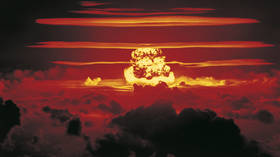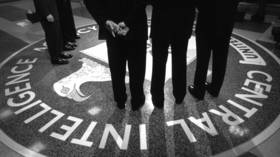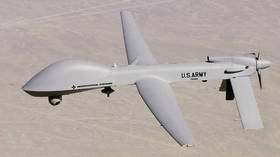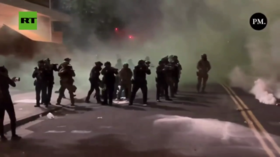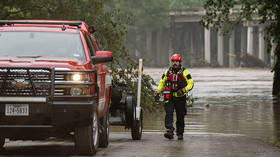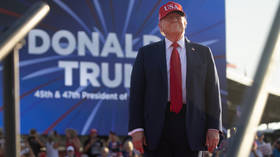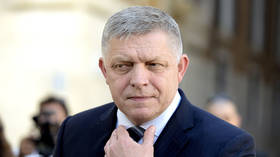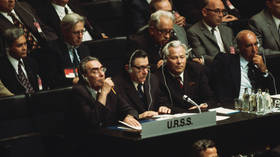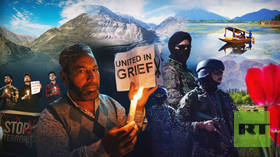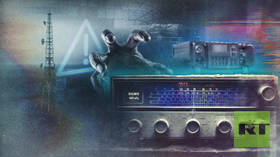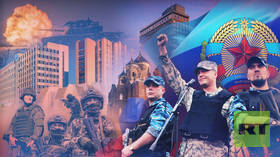New book offers a vivid insider account of how Cold War Soviet and American efforts to ditch their nukes played out
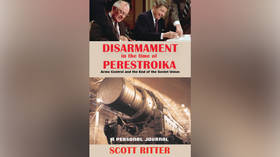
Former US Marine Corps intelligence officer, and RT columnist, Scott Ritter has produced an engaging and timely book that gives an eyewitness account of those Cold War days when ideological foes managed to put the brakes on an out-of-control arms race.
Many people, when confronted with bland Soviet-era terms such as ‘arms control’ and ‘disarmament,’ may be tempted to stifle a yawn and move on. However, that would be a mistake.
Here is a real page-turner – part history lesson, part Clancy thriller, with just the right touch of comic relief – that examines a critical period during the Cold War when the Americans and Russians were working to eliminate their missile stockpiles amid a climate of full-blown distrust.
The story begins in 1979 when the Soviets achieved a strategic edge against NATO forces with the introduction of the SS-20 nuclear-tipped missile. As if on cue, the Americans responded with the Pershing II, a projectile that could hit Moscow from Western Europe in eight minutes or less. And just like that, the arms race was on. Recognizing the futility of this tit-for-tat stockpiling, however, diplomats from the United States and Soviet Union, in a moment of rare consensus, understood the need to ban these weapons altogether.
On December 7, 1987, US President Ronald Reagan and Soviet General Secretary Mikhail Gorbachev put their signatures on the INF Treaty, thereby assigning hundreds of lethal weapons to the dustbin. Most history books are content to leave it at that, but Ritter offers a look at the day-to-day reality of how the disarmament was achieved.
In the opening pages, the reader is introduced to CargoScan, a hulking 9 million electron volt state-of-the-art X-ray machine designed to ensure that the Soviets weren’t secretly producing the prohibited SS-20 missiles. But since the device was useless parked in the mainland United States, it had to be placed outside of Udmurtia's Votkinsk Machine Building Plant, that is, deep inside Soviet territory, where these missiles were produced. Although CargoScan was an approved part of the treaty implementation and the Soviets were monitoring an analogous American site, getting the machine into the Soviet Union and up and running was nevertheless a miraculous feat in itself.
“You guys do realize that we’re thousands of miles away from the nearest Radio Shack,” the book cites ones of the commanders telling the team. “If this thing breaks, the Soviets don’t stop producing missiles. From a compliance verification standpoint, CargoScan has got to work perfectly, every time.”
Still, the device was deployed and went operational in early 1990.
In what could work as a great Netflix production, some 30 US inspectors, including Ritter, were assigned the task of X-raying every single shipment that left the Soviet facility. This is a chapter of Cold War history few people know much about – a group of Americans living and working smack in the middle of the adversary’s territory, 700 miles from the nearest US embassy, assigned the task of making sure the Soviets didn’t attempt to sneak through prohibited weapons. Despite the gravity of the task at hand, comedy was not alien to this region where the temperatures can plummet to 40 degrees below zero.
With the approach of winter, Ritter described how the American inspectors started donning their winter clothing in order to better cope.
“Their Soviet counterparts at the factory laughed at them,” he writes. "You have nice fall clothing,’ they said. ‘But it’s not real winter clothing. You’ll see.’”
Eventually the Americans did see – their clothing simply wasn’t designed to withstand the brutal winter conditions of this faraway industrial town. By necessity, the US inspectors began purchasing the fur-lined winter apparel popular with the locals, such as the handmade felt boots known as ‘valenki’. Back home, however, the US military brass were not pleased to see that their officers were starting to resemble “Soviet clones.”
After photographs of their Russian-made clothes went public, the team was forbidden “to purchase local boots, hats and coats, and instead undertook to procure clothing adequate to the task, ensuring that in the future all inspectors would be both warm and uniformly attired and look like Americans,” Ritter reveals, in one of many humorous tales that pepper his journey.
Amid this frozen tundra, the author reveals how he singlehandedly “cracked the code,” so to speak, of what was coming out of the Votkinsk factory, which carries all the mystery of Will Wonka’s Chocolate Factory. As powerful as the CargoScan X-ray machine might have been, it was a poor substitute for human intervention and observation. In what has been dubbed as the ‘Great American Novel’ (GAN), Ritter began tediously documenting what he saw entering and exiting the grounds of the facility. Eventually, as the scraps of paper turned into folders, he was able to predict down to the exact day when the next rail shipment of missiles would leave the factory. At one point, the Soviets refused to permit one of the exiting missiles to undergo x-raying, exactly as Ritter’s observations suggested they would do.
Aside from detailing the work carried out by the US inspectors in Votkinsk, Ritter keeps the pages turning with tales from those clandestine days of ‘spy versus spy.’ One episode tells the story of Marine Sergeant Clayton Lonetree, a guard at the US embassy in Moscow who was found guilty of providing classified documents to the KGB after becoming ensnared in a ‘honeypot’ relationship with a Russian female who was controlled by the Soviets. Another story details the tragic death of Army Major Arthur Nicholson who was shot by a Soviet sentry after he was caught investigating a Soviet motorized rifle regiment in East Germany. These sorts of stories, many of which had been lost to history until now, serve as a reminder of how high the stakes were in those tense times.
Last but not least, Ritter’s book provides a veritable ’who’s who’ on this period of marked animosity between the United States and the Soviet Union.
One such historical figure is Dmitry Fyodorovich Ustinov, who, after assuming the position of minister of defense in 1976, “was the real power in the Soviet Union.” That’s no small claim.
As Ritter tells it, in June 1941 Ustinov was plucked out of relative obscurity by none other than Joseph Stalin, who assigned the 32-year-old the crucial position of People’s Commissar for Armaments. Two weeks later, World War II erupted and Ustinov was suddenly forced to “produce armaments for the war effort while simultaneously evacuating critical factories threatened by the German advance to safety east of the Ural Mountains,” a formidable feat that earned him the title “Hero of Soviet Labor.”
Ustinov would go on to play an important role in the development of the Votkinsk factory, which since 1759 had been involved in Russia’s armaments production. First, Ustinov selected Vladimir Sadovnikov, an aspiring engineer who had been head of an air-to-air missile design bureau, as its director. This was followed by bringing on board another dazzling missile engineer, Aleksander Nadiradze, who would eventually earn the title “godfather of Soviet solid fuel ballistic missile design.” It is largely due to the work of these gifted individuals that Russia has become the leader in missile development and research today.
Perhaps the main takeaway from Ritter’s book, however, is the example it sets at a time when the specter of another world war looks increasingly imminent. Despite being ideological foes, diplomats and statesmen from the Soviet Union and United States always managed to find ways to bridge the gap separating them, even when the question came down to eliminating the most dangerous weapons on earth.
Today, with relations between Moscow and Washington barely existent, it would be a good time to reflect upon Ritter’s experiences in order to get both sides back to the subtle art of diplomacy. The world won’t survive another global conflict.
Scott Ritter’s new book, ‘Disarmament in the Time of Perestroika: Arms Control and the End of the Soviet Union,’ is available as print-on-demand on Clarity Press, and will be available for order from Amazon, Barns & Noble and other retailers this fall.
The statements, views and opinions expressed in this column are solely those of the author and do not necessarily represent those of RT.

